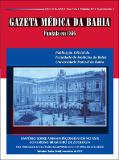Buscar
Mostrando ítems 11-20 de 68
Immune Response Towards Snake Venoms
(2011)
The immune response involves a complex repertoire of innate and adaptive responses to foreign agents in the organism. The present review focuses on the immune response to snake venoms, including those occurring in snakebite ...
Comparative proteomic analysis of the venom of the taipan snake, Oxyuranus scutellatus, from Papua New Guinea and Australia: Role of neurotoxic and procoagulant effects in venom toxicity
(2012-04-03)
The venom proteomes of populations of the highly venomous taipan snake, Oxyuranus scutellatus, from Australia and Papua New Guinea (PNG), were characterized by reverse-phase HPLC fractionation, followed by analysis of ...
Neutralization of the neuromuscular inhibition of venom and taipoxin from the taipan (Oxyuranus scutellatus) by F(ab0)2 and whole IgG antivenoms
(2016-01-22)
The neuromuscular junction activity of Oxyuranus scutellatus venom and its presynaptic neurotoxin, taipoxin, and their neutralization by two antivenoms were examined in mouse phrenic nerve-diaphragm preparations. The action ...
Assessing a 6-h endpoint observation time in the lethality neutralization assay used to evaluate the preclinical efficacy of snake antivenoms
(2021-11)
The lethality neutralization assay in mice is the gold standard for the evaluation of the preclinical efficacy and
specification fulfillment of snake antivenoms. However, owing to the animal suffering involved, this assay ...
Antivenoms for the treatment of snakebite envenomings: The road ahead
(2011-05)
The parenteral administration of antivenoms is the cornerstone of snakebite envenoming therapy. Efforts are made to ensure that antivenoms of adequate efficacy and safety are available world-wide. We address the main issues ...
Comparative study of the efficacy and safety of two polyvalent, caprylic acid fractionated [IgG and F(ab0)2] antivenoms, in Bothrops asper bites in Colombia
(2012-02)
The efficacy and safety of two polyvalent horse-derived antivenoms in Bothrops asper envenomings were tested in a randomized, double-blind, clinical trial performed in Colombia. Both antivenoms were manufactured from the ...
Similar effectiveness of Fab and F(ab')2 antivenoms in the neutralization of hemorrhagic activity of Vipera berus snake venom in mice
(1996)
The ability of two antivenoms to Vipera spp., consisting of Fab (Therapeutic Antibodies), or of F(ab′)2 (Zagreb Institute of Immunology) antibody fragments, to neutralize the hemorrhagic activity of Vipera berus snake venom ...
La situación de los antivenenos liofilizados en América Latina: Aspectos tecnológicos y de salud pública
Freeze-dried antivenoms in latin america: technological and public health considerations
(2012)
La administración parenteral de antivenenos constituye el elemento central en la terapia de los envenenamientos por
mordeduras o picaduras de animales ponzoñosos. En América Latina existen laboratorios productores de ...
Physical characteristics of nano-Hydroxyapatite Pickering-emulsions and their adjuvant activity on the antibody response towards the Bothros asper snake venom
(2019)
Emulsions are crucial in the treatment of snake bites to bust the antibody response of the inmunogen. The widely used Freund's emulsion typically combines 50/50 water-oil (W/O) phase. However, its use is limited because ...
Epidemiology of rapes in Costa Rica: Characterization of victims, perpetrators and circumstances surrounding forced intercourse
(2014-09)
Since the year 2000, the number of rapes in Costa Rica has increased at a rate of 42 cases per year. In 2011, 1786 rape cases were reported to the prosecution offices throughout the country, but only 1081 reports continued ...



